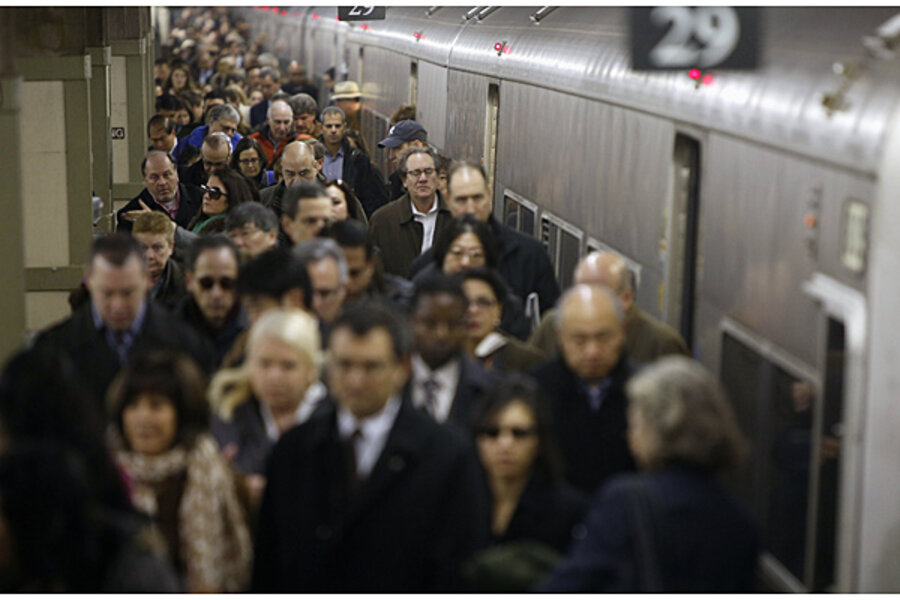Looking to buy a house? Don't forget transportation costs.
Loading...
When Sarah and I first moved into the home that we currently live in, it made sense in a number of ways for us.
Our jobs were in two different towns about forty minutes apart, so it seemed to make sense to live in a place that was halfway between the two so that neither one of us had a long commute.
In terms of our money, this was a horrendous decision.
For starters, it meant that we had to continuously maintain two vehicles. Every morning, when we went outside, we needed two vehicles to start. We had to maintain insurance on both vehicles as well.
Another problem is that our actual home is pretty far away from many services. There’s a Subway and a post office within reasonable walking distance of our home – and by reasonable, figure you’re going to spend an hour walking to get there and back. There are no grocery stores (outside of top quality gas stations) within a ten mile radius of our house.
Even worse, there really were no basic services right along our commuting paths to work. My old commuting path took me by a number of specialty shops, but I didn’t drive anywhere close to a grocery store without going at least a mile or two out of my way. My wife’s commute is almost entirely interstate.
In a lot of ways, we were in a much better situation right after we were first married. We owned one vehicle between us that Sarah used for commuting. I used public transportation to get back and forth to work. Like many forms of public transportation, there was a stop directly in front of a grocery store, where I’d stop a couple times a week to pick up groceries.
This saved us a ton of money. We had one fewer vehicle, saving us on the cost of the vehicle, the insurance, the maintenance, the license, and so on. We didn’t have to make a special trip to pick up groceries and we had to be careful with our grocery purchases so they could easily be carried on the bus. Most of the services we needed were within walking distance of our residence.
Today, we could easily own a home within reasonable distance of Sarah’s workplace. In fact, I’ve actually shopped for homes in that area. She could use public transportation to get to work, our children could school within a mile of our home, and we would actually rarely have to drive anywhere for anything.
Sounds great, right? There are a few catches.
One, there’s a higher up front cost for this location. A similar home to the one we have right now would be more expensive there.
However, our savings on our vehicle expenses would be tremendous. My best estimate is that our home price would increase by about 30% to 35% given the relative property values using online property estimators, but by moving down to one vehicle we would almost exactly recoup that difference over the course of a year. If you then assume that Sarah uses public transportation rather than the vehicle to go to and from work, we would save significant money on the move.
Two, Sarah and I both desire living in a rural area. Here’s the thing, though – living rurally does not make a whole lot of sense when Sarah is commuting into the middle of a metro area for work. That means a very long daily commute for her, adding significantly to her day.
However, if she were to look for a job in a more rural area – and there are jobs in the area much closer to where we live now that she would be very qualified for – that would change our equation substantially. A drastic reduction (or even elimination) of her commute would be a tremendous money saver for us and enable us to live in the rural area we desire.
So, what’s the real lesson here? You can save thousands of dollars each year – no exaggeration – by finding a home that minimizes your commute and transportation costs. This doesn’t mean you need to live right down the block from your job, but that if you can live in a location that is served by mass transportation that can take you to work and to other services you need, you’ll save tremendously because of that. Carpooling is another option that can work well in these types of situations.
You’ll likely need one fewer vehicle for your family if you’re able to do this, and even the remaining vehicle will see fewer miles on it. You can then sell off the remaining vehicle, giving you a small cash boon, a lower insurance bill, one fewer car to license and fuel and maintain, and fewer parking fees. Sure, you’ll probably need a mass transit pass or two, but the cost of those is far less than the costs you’re giving up.
What if you’re more rural, like us? Live very close to one person’s workplace rather than the other, enabling that one person to go vehicle-less for work, using a bicycle or walking to work. (That’s essentially what we do at this point, except that I work from home so I could theoretically work anywhere we moved to.)
The place you choose to live has a huge impact on your housing costs, but it also has a tremendous impact on your transportation costs as well. This should be a factor when you’re trying to calculate the total cost of living in different areas, and you should strive to minimize that total cost until you’re in a very financially secure place.






